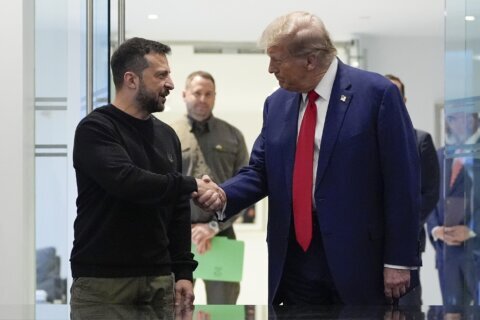Along with other changes to the medical school application process — including virtual interview days in lieu of in-person visits at many programs — the Association of American Medical Colleges introduced the Video Interview Tool for Admissions, or VITA, in August.
The tool allows medical schools to gather more information about prospective students while considering social distancing and other effects of the coronavirus pandemic.
Selected applicants are invited by participating medical schools to complete this one-way remote interview. For the current application cycle, VITA interviews may take place through April 30. Since a med school applicant may take it only once per application cycle, ensuring that you are prepared to complete it to the best of your ability is crucial.
[Read: Everything You Need to Know About Medical School Interviews.]
The VITA structure gives you one minute to reflect and three minutes to record an answer to six text-based interview questions aimed at evaluating the AAMC’s 15 core competencies for entering medical students.
Like many other aspects of the medical school application process, the tool comes with unique challenges that applicants must be ready to overcome in order to give themselves the best chance at gaining admission to med school. Here are three common VITA challenges and tips for troubleshooting them.
VITA Interview Applicants Will Not Receive Live Feedback
Unlike in a traditional interview, you will not be able to observe and respond to an interviewer’s verbal and noverbal cues as you answers questions. The one-way format may be unsettling, as you will not be interacting with a person and there will be no indication as to whether you are providing a satisfactory answer.
While the one-way format cannot be altered, you can make sure that you are giving good answers by adhering to the topic posed by the question stem, avoiding digressions and incorporating nuanced and complex thinking into your answers. For example, if you are asked why you want to become a physician, a simplistic answer like, “I want to help others” is not enough to give an interviewer any indication that you have carefully weighed your career options.
[See: How to Decide if You Should Go to Medical School and Become a Doctor.]
Focus on providing complete answers for each prompt. If you feel that you have stumbled on a question, take a breath and clear your mind of the mistake before the next question.
Technical Difficulties May Arise During the Interview
The AAMC acknowledges that applicants may experience technical disruptions during the interview and has planned accordingly. In case your internet browser closes unexpectedly, the AAMC recommends restarting the browser, navigating again to the interview platform and completing the interview from that point.
If an interview has been altered by a technological disruption, applicants must report the disruption to the AAMC via the Technology Issue Report Form within 24 hours. Applicants who are found to have had legitimate and significant disruptions may be allowed to retake the interview, which must be redone in its entirety. Responses completed during the prior attempt will not be available if applicants opt to retake. VITA responses from the original interview will be uploaded if applicants reject an offer by the AAMC to retake an interview.
The best way to cope with technological disruptions is to avoid them in the first place. Prior to beginning the interview, ensure your internet connection is strong and secure, that your device is charged and that your device has no updates or restarts scheduled. Close any background applications and verify that your camera and microphone are working.
It May Be Hard to Adapt to Time Constraints
Although in a traditional interview format you would not be given a full minute to reflect before offering a response to a question, VITA time constraints may still impose anxiety, making it hard to collect your thoughts before giving an answer. Further, you may feel pressure to fill the entire three minutes allotted for responses, leading to rambling or incomplete answers.
[READ: Coronavirus, Other Public Health Issues Key for Medical School Applicants.]
The best way to learn how to navigate VITA time limits is to practice answering VITA-like questions within them.
VITA questions are grouped into three categories: medical school journey, past behavior and situational. Using question examples from each of these categories to create your own practice VITA interviews can help you develop strategies to succinctly, completely and thoughtfully answer the questions posed.
For example, you might find that jotting down three or four bullet points during your one-minute reflection helps you stay on track during the three-minute response. Or you may find that telling the narrative of your journey toward med school several times during practice prepares you to concisely relay your story during the real interview.
As you practice, record your answers so that you can review them to determine if there are areas of improvement you need to address. Remember that you will not be able to review and edit answers on the actual VITA, so use your review for informational — not corrective — purposes.
More from U.S. News
How to Address Ethics Questions in Medical School Interviews
When to Update a Medical School Application
Questions Medical School Applicants Should Ask at Social Events
How Medical School Applicants Can Overcome VITA Interview Challenges originally appeared on usnews.com







